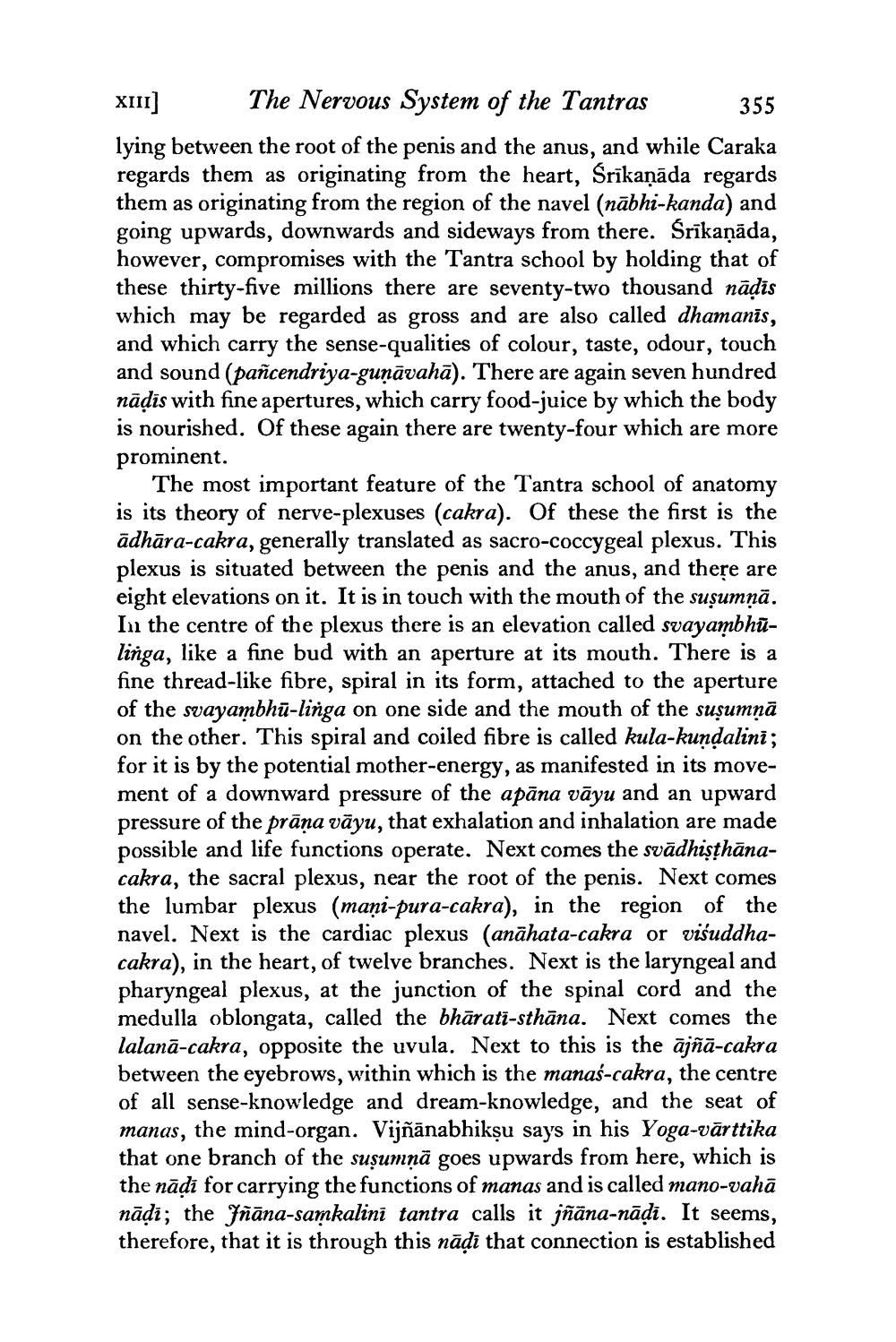________________
XIII]
The Nervous System of the Tantras 355 lying between the root of the penis and the anus, and while Caraka regards them as originating from the heart, Srīkaņāda regards them as originating from the region of the navel (nābhi-kanda) and going upwards, downwards and sideways from there. Śrīkaņāda, however, compromises with the Tantra school by holding that of these thirty-five millions there are seventy-two thousand nādīs which may be regarded as gross and are also called dhamanīs, and which carry the sense-qualities of colour, taste, odour, touch and sound (pañcendriya-guņāvahā). There are again seven hundred nādīs with fine apertures, which carry food-juice by which the body is nourished. Of these again there are twenty-four which are more prominent.
The most important feature of the Tantra school of anatomy is its theory of nerve-plexuses (cakra). Of these the first is the ādhāra-cakra, generally translated as sacro-coccygeal plexus. This plexus is situated between the penis and the anus, and there are eight elevations on it. It is in touch with the mouth of the susumnā. In the centre of the plexus there is an elevation called svayambhūlinga, like a fine bud with an aperture at its mouth. There is a fine thread-like fibre, spiral in its form, attached to the aperture of the svayambhū-linga on one side and the mouth of the suşumņā on the other. This spiral and coiled fibre is called kula-kundalini; for it is by the potential mother-energy, as manifested in its movement of a downward pressure of the apāna vāyu and an upward pressure of the prāna väyu, that exhalation and inhalation are made possible and life functions operate. Next comes the svādhişthānacakra, the sacral plexus, near the root of the penis. Next comes the lumbar plexus (maņi-pura-cakra), in the region of the navel. Next is the cardiac plexus (anāhata-cakra or visuddhacakra), in the heart, of twelve branches. Next is the laryngeal and pharyngeal plexus, at the junction of the spinal cord and the medulla oblongata, called the bhāratī-sthāna. Next comes the lalanā-cakra, opposite the uvula. Next to this is the ājñā-cakra between the eyebrows, within which is the manas-cakra, the centre of all sense-knowledge and dream-knowledge, and the seat of manas, the mind-organ. Vijñānabhikṣu says in his Yoga-vārttika that one branch of the suşumņā goes upwards from here, which is the nāļi for carrying the functions of manas and is called mano-vahā nādi; the Jñāna-samkalini tantra calls it jñāna-nādi. It seems, therefore, that it is through this nādi that connection is established




